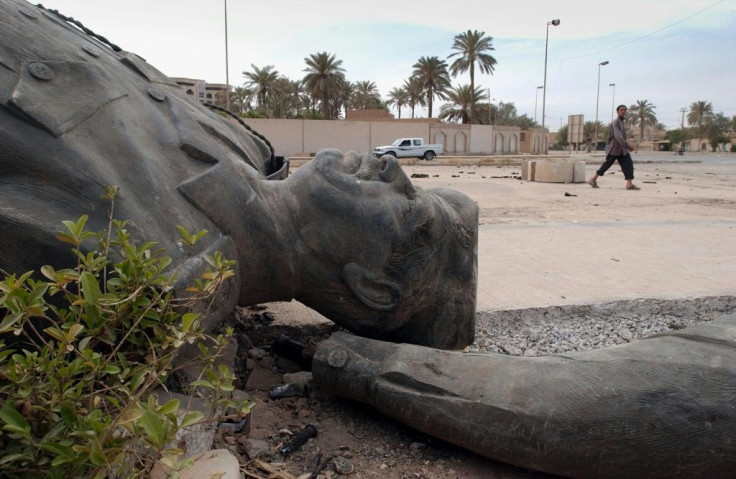Saddam Hussein's Net Worth Before Death Was Massive: How Did He Become Rich?
KEY POINTS
- Saddam Hussein's fortune was said to have been nearly four times that of Queen Elizabeth's before his death
- He reportedly built 100 palaces and "VIP luxury residences" while he was in power
- He was sentenced to death by hanging in 2006 after being convicted of crimes against humanity
Saddam Hussein was president of Iraq for more than two decades and is seen as a figurehead of the country's military conflicts with Iran and the U.S.
At the time of his death in December 2006, he was believed to have had a net worth of $2 billion, according to Celebrity Net Worth. Some estimates claimed that Hussein's fortune was as much as $40 billion at one point, CBS News reported.
In 1999, Hussein ranked seventh on Forbes' list of the richest heads of state in the world with an estimated net worth of $6 billion, according to the Associated Press.
Four years later, the magazine estimated that Hussein was worth around $2 billion, which, while lower than Forbes' previous estimate of his wealth, was still nearly four times that of Queen Elizabeth's. The British monarch was said to have had a net worth of $525 million in 2003, according to Forbes.
Hussein’s wealth was attributed by the magazine to oil and to an alleged smuggling operation controlled by his son Odai.
While Hussein was in power, he built 100 palaces and "VIP luxury residences" decorated in marble and gold all over Iraq for his family, mistresses, friends and party officials, NBC News reported in 2003, citing U.S. and United Nations officials. U.S. intelligence estimated the total construction cost to have amounted to $2 billion, without the inclusion of the furnishing expenses, according to an unnamed official.
U.N. documents listed eight main palace compounds containing more than 1,000 buildings and covering some 32 square kilometers (12 square miles) in total, CNN reported. The buildings included luxury mansions, smaller guest villas, office complexes, warehouses and garages.
In the early 1980s, Hussein involved his country in an eight-year war with Iran, which is estimated to have taken over a million lives on both sides.
Hussein was alleged to have used nerve agents and mustard gas on Iranian soldiers during the conflict, as well as chemical weapons on Iraq’s own Kurdish population in northern Iraq in 1988.
After he invaded Kuwait in 1990, a U.S.-led coalition invaded Iraq in 1991. However, it failed to remove Hussein from power.
Throughout the 1990s, Hussein faced both U.N. economic sanctions and airstrikes that attempted to cripple his ability to produce chemical, biological and nuclear weapons. With Iraq continuing to face allegations of illegal oil sales and weapons-building, the U.S. again invaded the country in March 2003.
Prior to the American invasion of Iraq, over $1 billion in cash was removed from the Iraqi central bank in a single evening by half a dozen military trucks, The Guardian reported, citing intelligence from Baghdad.
It was later discovered that Hussein’s second son Qusay ordered the removal of the money. Most of the money was eventually discovered in one of Hussein’s palaces.
On Nov. 5, 2006, Hussein was convicted of crimes against humanity related to the 1982 killing of 148 Iraqi Shi'ites and was sentenced to death by hanging. Though he requested to be executed by firing squad, he was hanged on Dec. 30, 2006, at Iraqi army base Camp Justice.

© Copyright IBTimes 2024. All rights reserved.





















